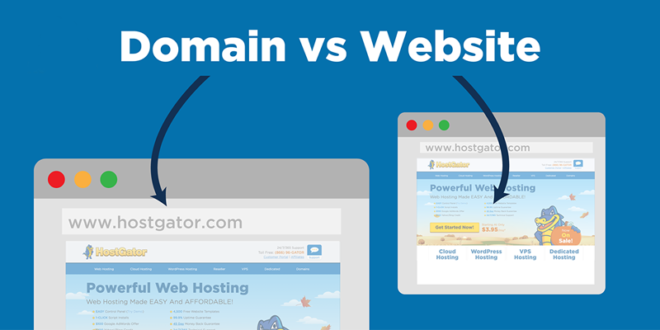The Ultimate Guide to Website Domain Registration
Secure your online presence with our website domain registration services. Find the perfect domain name for your business or personal site, with competitive pricing, easy management tools, and excellent customer support. Start building your brand today!
What is Domain Registration?
Domain registration is the process of acquiring a unique web address (like www.yourwebsite.com) that allows users to access your website on the internet. This unique address is known as a domain name, and it is essential for establishing your online presence. Think of it as your website’s street address; without it, your site wouldn’t be easily accessible.
Why is Domain Registration Important?
- Professionalism: A custom domain name lends credibility and professionalism to your website, making it more appealing to visitors and potential customers.
- Brand Identity: Your domain name is a key part of your brand identity. A memorable, relevant domain name can help reinforce your brand and make it easier for users to find you online.
- SEO Benefits: A relevant domain name can improve your website’s search engine ranking, making it easier for users to find your site through search engines like Google.
- Control: Owning your domain name gives you control over your online presence. You can create custom email addresses (like [email protected]) and have full control over your website’s content and structure.
Steps to Register a Domain Name
- Choose a Domain Name: Select a name that reflects your brand, is easy to remember, and includes relevant keywords if possible. Ensure it’s not too long and doesn’t include hyphens or numbers if they can be avoided.
- Check Availability: Use a domain registration service to check if your chosen domain name is available. If it’s taken, these services often suggest alternative names.
- Select a Domain Registrar: A domain registrar is a company that manages the reservation of domain names. Some popular registrars include GoDaddy, Namecheap, and Google Domains.
- Purchase the Domain: Once you’ve found an available domain name, you can purchase it. You’ll need to provide some personal information and select the registration term (typically from 1 to 10 years).
- Verify Ownership: After purchase, you’ll usually need to verify your email address and confirm your domain registration.
Tips for Choosing the Right Domain Name
- Keep It Simple: Aim for a domain name that is easy to spell and pronounce.
- Use Keywords: Incorporate relevant keywords that describe your business or website content.
- Consider Extensions: While .com is the most popular, there are many other extensions available (such as .net, .org, .io). Choose one that suits your needs.
- Avoid Trademark Issues: Ensure your domain name doesn’t infringe on any existing trademarks.
- Think Long-Term: Choose a name that will still be relevant as your website or business grows.
Domain Registration and Hosting
While domain registration gives you a unique address on the internet, you’ll also need web hosting to store your website’s files and make them accessible online. Many companies offer both domain registration and hosting services, allowing you to manage everything in one place.
Managing Your Domain Name
Once your domain name is registered, you can manage it through your registrar’s control panel. This includes renewing your registration, updating contact information, and configuring DNS settings to connect your domain with your web hosting.
In the vast landscape of the internet, a website domain serves as the digital address where users can find and access your online presence. It’s not just a technical detail; it’s a crucial component of your brand identity, online visibility, and overall success. Understanding the ins and outs of website domains is essential for anyone looking to establish or expand their online footprint. In this comprehensive guide, we’ll delve into the fundamentals of website domains, how they work, the different types available, important considerations when choosing one, and tips for finding the perfect domain name for your website.
What is a Website Domain?
Imagine the internet as a vast network of interconnected devices, each with its unique identifier called an IP address. While these IP addresses serve as the backbone of internet communication, they are not particularly user-friendly. This is where website domains come into play. A website domain, also known as a domain name, is a human-readable address that allows users to navigate the internet with ease. It’s the familiar string of characters that you type into your browser’s address bar to visit a website, such as “google.com” or “facebook.com”.
Anatomy of a Domain Name
A domain name consists of several components, each serving a specific purpose:
- Subdomain: An optional prefix to the main domain, often used to denote specific sections or services within a website (e.g., “www” in “www.example.com“).
- Second-Level Domain (SLD): The primary part of the domain name that identifies the specific website or organization (e.g., “example” in “example.com”).
- Top-Level Domain (TLD): The suffix that follows the SLD and represents the category or purpose of the website (e.g., “.com”, “.org”, “.net”).
Together, these components form the complete domain name that uniquely identifies a website on the internet.
Types of Top-Level Domains (TLDs)
Top-level domains are divided into several categories, each serving a specific function or geographic region:
- Generic TLDs (gTLDs): These are generic domains not tied to a specific country or region, such as “.com”, “.org”, “.net”, and “.info”.
- Country-Code TLDs (ccTLDs): Two-letter domain extensions corresponding to specific countries or territories, like “.us” (United States), “.uk” (United Kingdom), and “.ca” (Canada).
- Sponsored TLDs (sTLDs): Specialized domains reserved for specific organizations or communities, such as “.gov” (government), “.edu” (education), and “.org” (non-profit organizations).
Each type of TLD serves a unique purpose and may be more suitable for certain types of websites or businesses.
Importance of Choosing the Right Website Domain Name
Your domain name plays a crucial role in shaping your online identity and influencing how users perceive your website. Here’s why choosing the right domain name is essential:
- Brand Identity: Your domain name is often the first impression users have of your brand, so it should reflect your brand identity and values.
- SEO Impact: Keywords in your domain name can positively impact your website’s search engine visibility, making it easier for users to find you online.
- Credibility and Trust: A professional-looking domain name enhances your website’s credibility and trustworthiness, encouraging users to engage with your content.
- Direct Traffic: A descriptive domain name can attract direct traffic from users who type relevant keywords into their browsers, bypassing search engines.
- Email Marketing: Your domain name is part of your email address, so choosing a branded domain enhances the professionalism of your communications.
Tips for Choosing the Right Website Domain Name
Selecting the perfect domain name requires careful consideration and planning. Here are some tips to help you choose the right one:
- Keep it Short and Memorable: Choose a domain name that is easy to remember and type, as shorter names are generally more memorable.
- Make it Brandable: Create a domain name that reflects your brand identity and is unique enough to stand out from competitors.
- Use Keywords Wisely: Incorporate relevant keywords into your domain name to improve its SEO value and convey the purpose of your website.
- Avoid Hyphens and Numbers: Hyphens and numbers can make domain names harder to remember and prone to confusion, so use them sparingly.
- Check Availability and Trademarks: Before finalizing your domain name, ensure it is available and does not infringe on existing trademarks to avoid legal issues.
Registering Your Website Domain Name
Once you’ve chosen the perfect domain name for your website, the next step is to register it with a domain registrar. Here’s how the domain registration process typically works:
- Choose a Registrar: Select a reputable domain registrar that offers competitive pricing, reliable customer support, and user-friendly registration processes.
- Search for Your Domain: Use the registrar’s domain search tool to check the availability of your chosen domain name and explore alternative options if necessary.
- Select a TLD: Choose the top-level domain extension that best suits your website’s purpose and target audience.
- Complete the Registration: Follow the registrar’s instructions to complete the domain registration process, providing your contact information and payment details.
- Manage Your Domain: Once registered, you can manage your domain settings, renewals, and DNS configurations through the registrar’s control panel.
A website domain is more than just an address; it’s the gateway to your online presence. Choosing the right domain name is a critical step in establishing your brand identity, enhancing your online visibility, and attracting visitors to your website. By understanding the fundamentals of website domains and following the tips outlined in this guide, you can find the perfect domain name that sets your website up for success in the digital world.
 webhostfair Web hosting news, reviews | Best web hosting service for your business
webhostfair Web hosting news, reviews | Best web hosting service for your business

